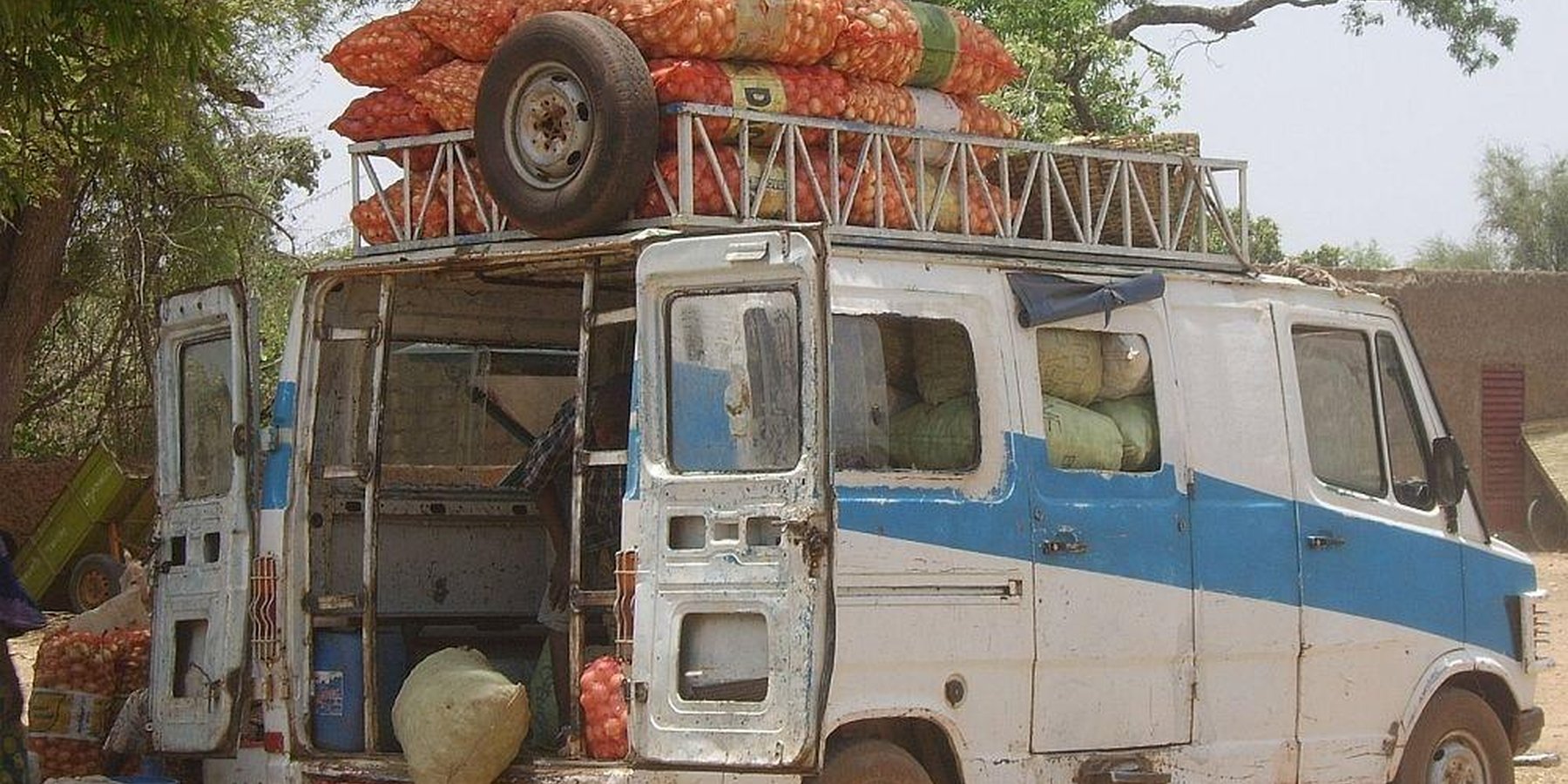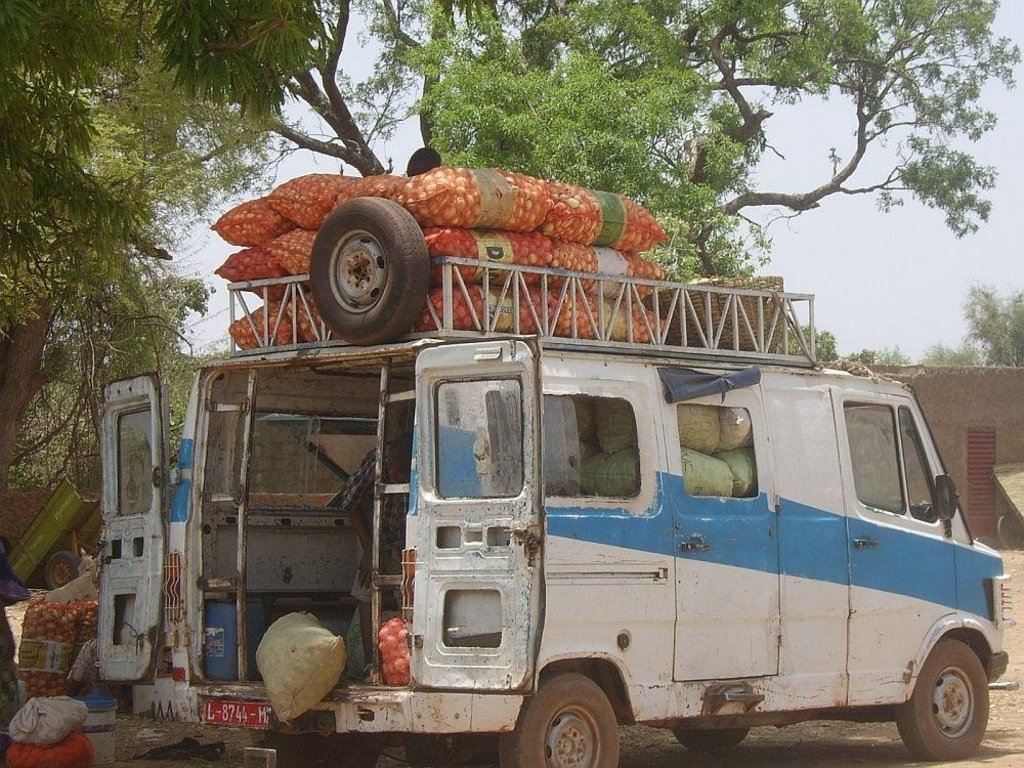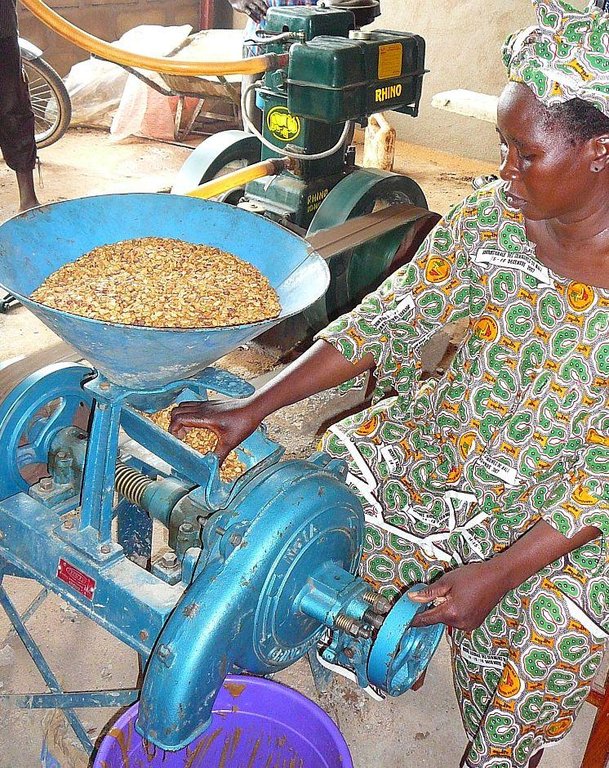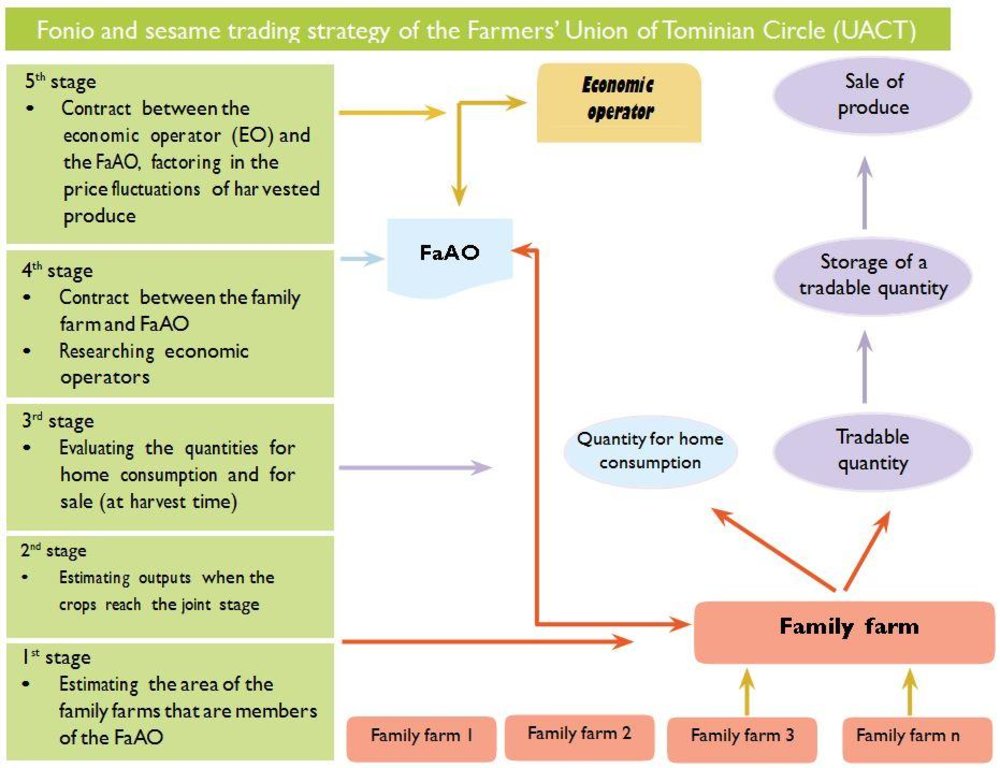Bulk sales approach for farmer apex organisations (FaAO) [مالي]
- تاريخ الإنشاء:
- تحديث:
- جامع المعلومات: Dieter Nill
- المحرر: –
- المُراجع: Laura Ebneter
Approche de commercialisation groupée par des organisations paysannes faitières (OPF))
approaches_2510 - مالي
عرض الأقسام
توسيع الكل طي الكل1. معلومات عامة
1.2 تفاصيل الاتصال بالأشخاص الرئيسيين لمصدر المعلومات والمؤسسات المعنية بتقييم وتوثيق النهج
متخصص في الإدارة المستدامة للأراضي:
Dacko Maïga Rosaline
rosaline.dacko@helvetas.org
HELVETAS - Swiss Intercooperation
مالي
متخصص في الإدارة المستدامة للأراضي:
Keita Lassana
lassana.keita@helvetas.org
HELVETAS - Swiss Intercooperation
مالي
متخصص في الإدارة المستدامة للأراضي:
Guindo Idrissa
idrissa.guindo@helvetas.org
HELVETAS - Swiss Intercooperation
مالي
اسم المؤسسة (المؤسسات) التي سهلت توثيق/تقييم النهج (إذا كان ذلك على صلة)
HELVETAS (Swiss Intercooperation)اسم المؤسسة (المؤسسات) التي سهلت توثيق/تقييم النهج (إذا كان ذلك على صلة)
Deutsche Gesellschaft für Internationale Zusammenarbeit (GIZ) GmbH (GIZ) - ألمانيا1.3 الشروط المتعلقة باستخدام البيانات الموثقة من خلال WOCAT
متى تم تجميع البيانات (ميدانيا)؟:
01/07/2012
يوافق جامع المعلومات والشخص (لاشخاص) الرئيسي لمصدر المعلومات على الشروط المتعلقة باستخدام البيانات الموثقة من خلال WOCAT:
نعم
2. وصف نهج الإدارة المستدامة للأراضي
2.1 وصف موجز للنهج
Improve the income of family farms by setting up an organized trade mechanism that factors in market price fluctuations.
2.2 وصف تفصيلي للنهج
وصف تفصيلي للنهج:
The objective of the practice is to improve the income of family farms by setting up an organized trade mechanism that factors in market price fluctuations. Structuring trade in this way puts producers in a stronger position in their value chains.
The FaAOs’ approach to trade is based, on the one hand, on purchase agreements for preservable produce (cereals, sesame, etc.) between the FaAO and its producers and, on the other, on sales contracts with one or several market operators/suppliers. The practice enables producers to sell their produce after the harvest at an attractive price, depending on market fluctuations. For the operator, it means a large quantity can be purchased over time, without the need for mobilising major pre-financing resources. As the intermediary, the FaAO benefits from a profit margin and charges levied on transactions.
Stages of implementation: 1) Estimating the areas of family farms that are members of the FaAO: Together with its producers, the FaAO calculates sown areas (of rice, for example) fairly speculatively, providing the first estimates of future outputs. 2) Estimating outputs: Prior to harvesting, the initial estimates made in stage 1 are further refined through crop inspections. 3) Evaluating the quantities for home consumption and for sale: After the harvest, FaAO producers assess what part of their output will be retained for home consumption and what will be sold. 4) Contracting between the family farms and FaAO: The FaAO enters into a contract with the producers for the part to be sold. 5) Contracting between the economic operator and FaAO: Research into economic operators; At a consultation day involving producers, FaAO and operators, a contract is negotiated between FaAO and the operators, who will factor in price increases up to the lean period. Operation: Introducing this approach requires a robust FaAO or family farm, a market analysis and good quality produce. The portion of the output for sale is transferred to the FaAO storage facility. The operator draws down this produce over an extended period. The price for each consignment varies according to the market rate prevailing at the time the produce is drawn down.
Producers provide, process and pack the produce, and enter into a contract with FaAO. The apex organisation researches economic operators, negotiates the sales contract on behalf of the economic operators, stores the produce, monitors sales and manages rebates. Operators draw down produce in line with the terms of the sales contract, and make payments accordingly. Support partners deliver training, provide advisory support and foster contacts.
2.3 صور عن النهج
2.5 البلد/المنطقة/المواقع التي تم تطبيق النهج فيها
البلد:
مالي
المنطقة/الولاية/المحافظة:
Mali
مزيد من التفاصيل حول الموقع:
Ségou, Sikasso
2.6 تواريخ بدء وإنهاء تنفيذ النهج
أشر إلى سنة البدء:
2008
2.7 نوع النهج
- قائم على مشروع/برنامج
2.8 الغايات/الأهداف الرئيسية للنهج
The objective of the practice is to improve the income of family farms by setting up an organized trade mechanism that factors in market price fluctuations. Structuring trade in this way puts producers in a stronger position in their value chains.
The SLM Approach addressed the following problems: low income of family farms, market price fluctuations
2.9 الظروف التي تمكن أو تعيق تنفيذ التقنية/التقنيات المطبقة بموجب النهج
توفر/الوصول إلى الموارد والخدمات المالية
- معيق
low income of family farms
Treatment through the SLM Approach: setting up an organized trade mechanism that factors in market price fluctuations; purchase agreements for preservable produce (cereals, sesame, etc.) between the FaAO and its producers and sales contracts with one or several market operators/suppliers.
3. المشاركة وأدوار الأطراف المعنية
3.1 أصحاب المصلحة المعنيون بالنهج وأدوارهم
- مستخدمو الأراضي المحليون/المجتمعات المحلية
- متخصصون في الإدارة المستدامة للأراضي / مستشارون زراعيون
- منظمة غير حكومية
- الحكومة المحلية
- الحكومة الوطنية (المخططون، صانعو القرار)
3.2 انخراط مستخدمي الأراضي المحليين/المجتمعات المحلية في المراحل المختلفة للنهج
| انخراط مستخدمي الأراضي المحليين/المجتمعات المحلية | حدد من شارك وصف الأنشطة | |
|---|---|---|
| المبادرة/التحفيز | سلبي | |
| التخطيط | تفاعلي | |
| التنفيذ | تفاعلي | |
| الرصد/التقييم | تفاعلي | |
| Research | سلبي |
3.3 مخطط التدفق (إذا كان متاحًا)
3.4 اتخاذ القرار بشأن اختيار تقنية/تقنيات الإدارة المستدامة للأراضي
حدد من الذي قرر اختيار التقنية/التقنيات التي سيتم تنفيذها:
- متخصصون في الإدارة المستدامة للأراضي بشكل أساسي، بعد التشاور مع مستخدمي الأراضي
اشرح:
Decisions on the method of implementing the SLM Technology were made by mainly by SLM specialists with consultation of land users
4. الدعم الفني وبناء القدرات وإدارة المعرفة
4.1 بناء القدرات/التدريب
هل تم تقديم التدريب لمستخدمي الأراضي / الأطراف المعنيين الآخرين؟:
نعم
حدد من تم تدريبه:
- مستخدمو الأراضي
شكل التدريب:
- في العمل
- من مزارع إلى مزارع
- اجتماعات عامة
المواضيع المغطاة:
Support partners deliver training, provide advisory support and foster contacts.
4.3 تعزيز المؤسسات (التطوير التنظيمي)
هل تم إنشاء أو تعزيز مؤسسات من خلال هذا النهج؟:
- نعم، إلى حد كبير
حدد المستوى (المستويات) التي تم فيها تعزيز أو إنشاء المؤسسات:
- محلي
حدد نوع الدعم:
- مالي
اعط مزيدا من التفاصيل:
Improve the income of family farms by setting up an organized trade mechanism that factors in market price fluctuations. Structuring trade in this way puts producers in a stronger position in their value chains.
4.4 الرصد والتقييم
هل يشكل الرصد والتقييم جزءا من النهج؟:
نعم
التعليقات:
socio-cultural aspects were ad hoc monitored by project staff, land users through observations
economic / production aspects were regular monitored by project staff through measurements
management of Approach aspects were ad hoc monitored by project staff through observations
There were no changes in the Approach as a result of monitoring and evaluation
There were no changes in the Technology as a result of monitoring and evaluation
4.5 البحوث
هل كانت البحوث جزءًا من النهج؟:
نعم
حدد المواضيع:
- علم الاجتماع
- الاقتصاد / التسويق
5. التمويل والدعم المادي الخارجي
5.1 الميزانية السنوية لمكون الإدارة المستدامة للأراضي في النهج المذكور
التعليقات (على سبيل المثال المصادر الرئيسية للتمويل/الجهات المانحة الرئيسية):
Approach costs were met by the following donors: international non-government: 100.0%
5.2 الدعم المالي/المادي المقدم لمستخدمي الأراضي
هل حصل مستخدمو الأراضي على دعم مالي/ مادي لتنفيذ التقنية/ التقنيات؟:
كلا
5.4 الائتمان
هل تم توفير ائتمان في إطار نهج أنشطة الإدارة المستدامة للأراضي؟:
كلا
6. تحليل الأثر والتصريحات الختامية
6.1 آثار النهج
هل ساعد النهج مستخدمي الأراضي على تنفيذ وصيانة تقنيات الإدارة المستدامة للأراضي؟:
- لا
- نعم، قليلا
- نعم، باعتدال
- نعم، إلى حد كبير
The approach offers producers greater opportunities to access enhanced seeds and inputs (credibility among service providers).
هل ساهم النهج في تمكين الفئات المحرومة اجتماعيا واقتصاديا؟:
- لا
- نعم، قليلا
- نعم، باعتدال
- نعم، إلى حد كبير
When prices become more lucrative, producers are less inclined to sell off their harvest; the risk of slumps in prices is minimal.
Did other land users / projects adopt the Approach?
- لا
- نعم، قليلا
- نعم، باعتدال
- نعم، إلى حد كبير
Implementation locations: Ségou and Sikasso. 12,750 beneficiaries are applying this approach in 14 apex organisations.
Did the Approach lead to improved livelihoods / human well-being?
- لا
- نعم، قليلا
- نعم، باعتدال
- نعم، إلى حد كبير
Puts producers in a stronger position in their value chains. Incomes are stabilised, which improves living conditions and social cohesion. Communities are better able to pay taxes and more receptive to formalised contracts.
Did the Approach help to alleviate poverty?
- لا
- نعم، قليلا
- نعم، باعتدال
- نعم، إلى حد كبير
6.2 المحفز الرئيسي لقيام مستخدمي الأراضي بتنفيذ الإدارة المستدامة للأراضي
- زيادة الإنتاج
- زيادة الربح (القدرة)، وتحسين نسبة التكلفة إلى العائد
6.3 استدامة أنشطة النهج
هل يمكن لمستخدمي الأراضي المحافظة على استدامة ما تم تنفيذه من خلال النهج (بدون دعم خارجي)؟:
- غير مؤكد
6.4 نقاط قوة/مزايا النهج
| نقاط القوة/ المزايا/ الفرص من وجهة نظر جامع المعلومات أو غيره من الاشخاص الرئيسيين لمصدر المعلومات |
|---|
| Bank loans guaranteed as a result of retained stocks and management tools |
|
Guaranteed revenues for small-scale producers |
| Improved post-harvest management |
| As revenues grow, producers seek to maximise their cropping schedules in order to earn more money. The approach offers producers greater opportunities to access enhanced seeds and inputs (credibility among service providers). When prices become more lucrative, producers are less inclined to sell off their harvest; the risk of slumps in prices is minimal. Incomes are stabilised, which improves living conditions and social cohesion. Communities are better able to pay taxes and more receptive to formalised contracts. |
| Price stabilisation (to prevent produce from being sold-off) and improved producer incomes (How to sustain/ enhance this strength: A thorough market analysis must be conducted to enable market price fluctuations to be accurately predicted and the best times for sale to be pinpointed. Client relationships must be professional and contractual. Informal commitments often fall through. The FaAO must have committed and business-minded leaders. It is wise to stay vigilant when it comes to the governance of these organisations, as they can fall prey to corrupt practices and the embezzlement of collective funds.) |
7. المراجع والروابط
7.1 طرق جمع/مصادر المعلومات
- زيارات ميدانية، مسوحات ميدانية
- مقابلات مع مستخدمي الأراضي
7.2 المراجع للمنشورات المتاحة
العنوان، المؤلف، السنة، النظام القياسي الدولي لترقيم الكتب ISBN:
Manual of Good Practices in Small Scale Irrigation in the Sahel. Experiences from Mali. Published by GIZ in 2014.
متاح من أين؟كم التكلفة؟:
http://star-www.giz.de/starweb/giz/pub/servlet.starweb
العنوان، المؤلف، السنة، النظام القياسي الدولي لترقيم الكتب ISBN:
HELVETAS Swiss Intercooperation: annual report 2010-2011 for the San Hub (Pôle de San)
العنوان، المؤلف، السنة، النظام القياسي الدولي لترقيم الكتب ISBN:
HELVETAS Swiss Intercooperation (2013): JIGIYA programme evaluation report
الروابط والوحدات المواضيعية
توسيع الكل طي الكلالروابط
لا يوجد روابط
الوحدات المواضيعية
لا يوجد وحدات مواضيعية





